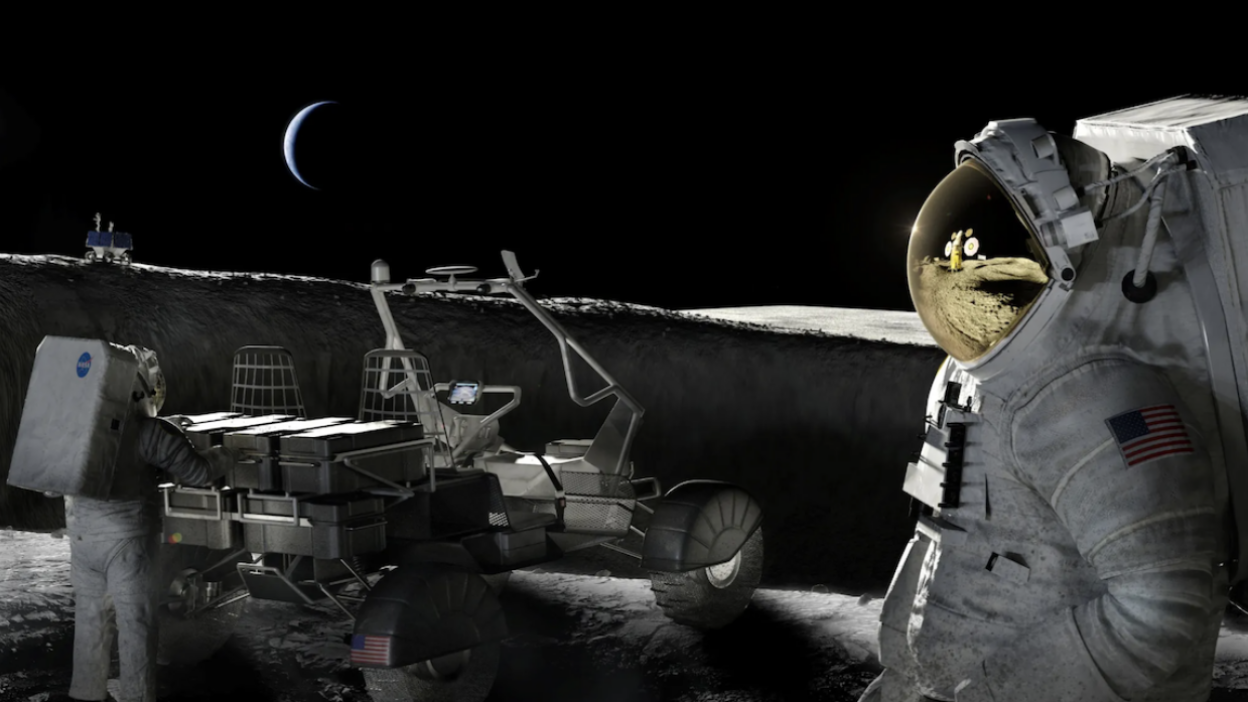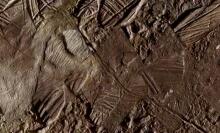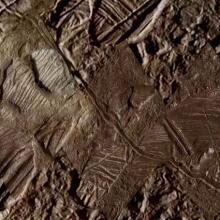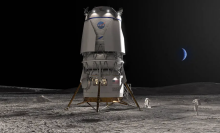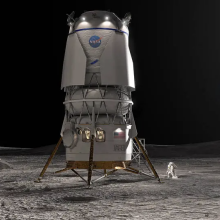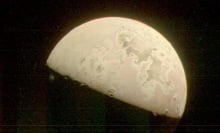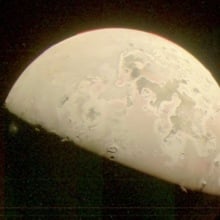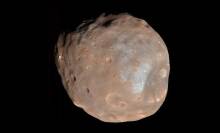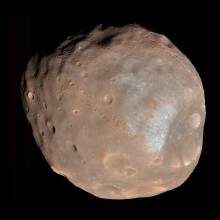Water is the future.
NASA, preparing to establish a permanent presence on the moon, has detected deposits of water ice on the moon "more extensive than previously thought." An instrument on the space agency's Lunar Reconnaissance Orbiter found the ice embedded in the lunar surface.
"New findings from NASA’s Lunar Reconnaissance Orbiter reveal that lunar ice deposits are more widespread than we thought, even beyond the south pole’s shadowed regions!" Nicky Fox, who heads NASA's Science Mission Directorate, posted online. "These icy deposits could contain vital resources for future explorers, including water for radiation protection, air, energy, and even rocket fuel!"
Previous lunar reconnaissance has located ice preserved in profoundly cold craters in or near the moon's south pole, the aptly named "permanently shadowed regions," or PSRs. That's a primary reason why NASA's return to the moon, called the Artemis program, will land near these craters. This new research, published in the peer-reviewed Planetary Science Journal, found significant ice in more distant craters.
"We find that there is widespread evidence of water ice within PSRs outside the south pole, towards at least 77 degrees south latitude," NASA researcher Timothy P. McClanahan, who led the research, said in a statement.
The map below shows locations of permanently shadowed areas in the south pole out to 80 degrees south latitude (the literal south pole, located inside the rim of Shackleton crater, is at 90 degrees south latitude). Much of the ice here and beyond likely dwells in craters with frigid temperatures under -325 Fahrenheit, or -198 Celsius. Some of these shadowed craters haven't seen sunlight for billions of years.
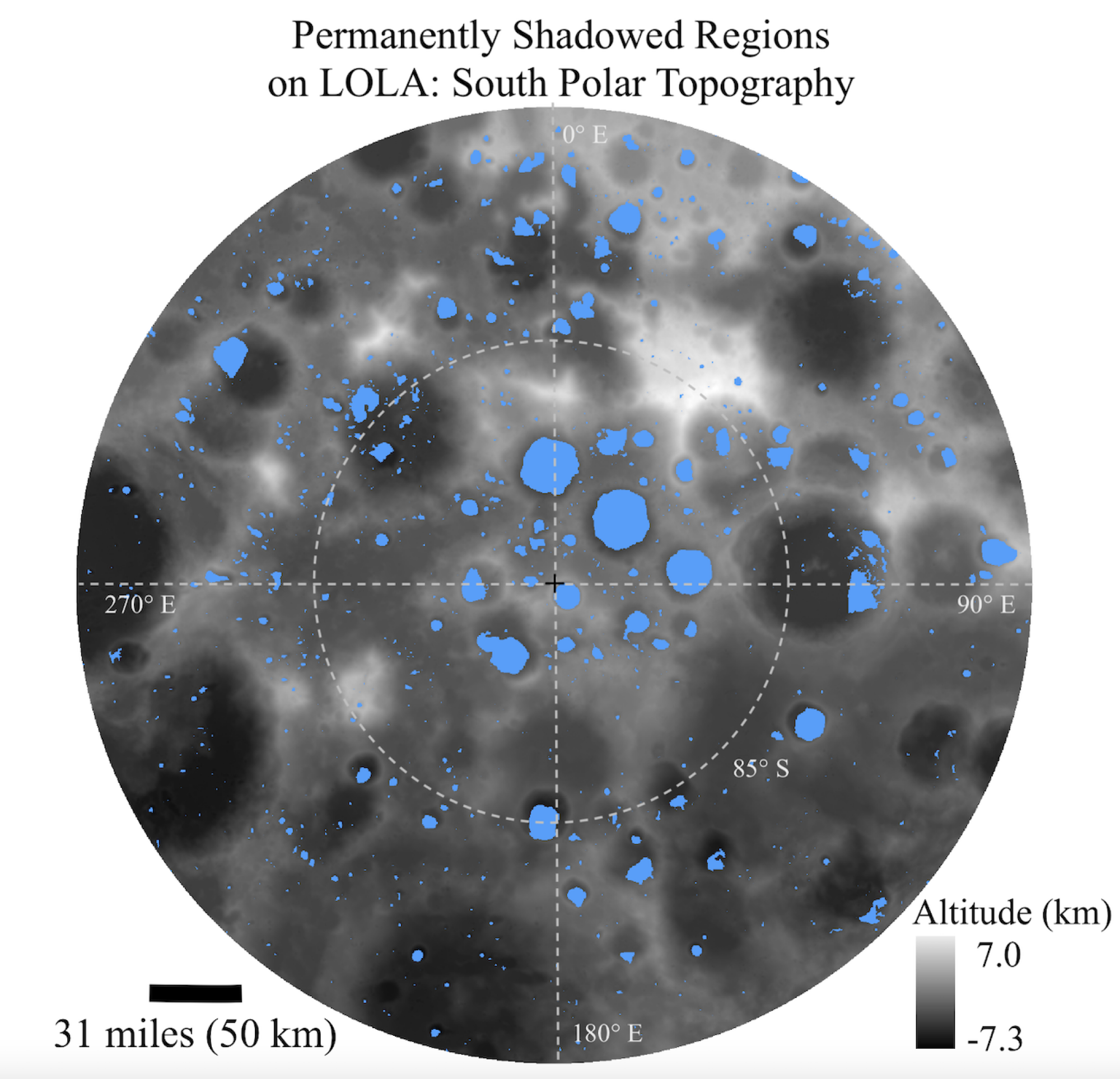
Tweet may have been deleted
How much water did the Lunar Reconnaissance Orbiter detect beyond the south pole? For each square meter (1.2 square yards) of surface with detected ice, "there should be at least about five more quarts (five more liters) of ice within the surface top 3.3 feet (meter)" compared to the surrounding environs, McClanahan said. The NASA satellite's Lunar Exploration Neutron Detector, or LEND, located the ice by indicating where pockets of frozen hydrogen exist on or near the surface.
Over eons, comets and meteors striking the moon could have transported bounties of water to the moon's surface. Other sources could be water vapor that naturally seeped out of the lunar underground, or chemical reactions between oxygen in the lunar soil and the relentless solar wind.
When NASA astronauts return to the moon — no earlier than September 2026 — one of their primary missions, over the course of a week, will be to look for ice and collect surface samples to bring back to Earth. Eventually, if the ice is confirmed, such exploration will pave the way for harvesting lunar ice on a moon base.
Of course, without this ice, no one can survive on the moon.
Topics NASA
